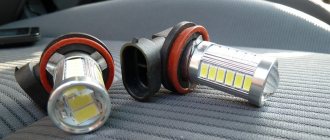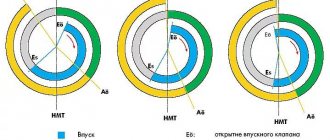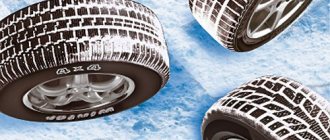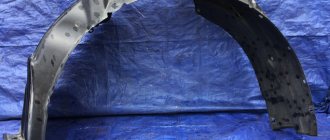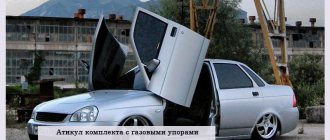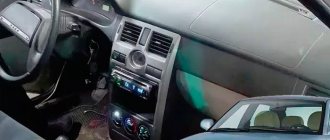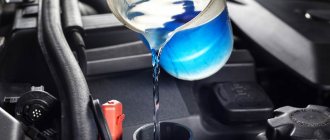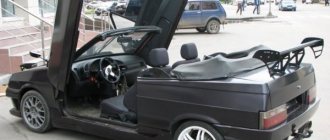There is a lot of debate online about whether a tube is installed in a tubeless tire and what the consequences of repair are. Some users claim that in this case the car behaves unpredictably. Others insist that the repair method is acceptable. Experts are also divided into two camps. On the one hand, installing such a wheel will cause damage to the car. Opponents don't see anything wrong.
Before drawing conclusions and making a decision, it is necessary to carefully weigh all the advantages and disadvantages of the procedure.
Installing a camera in a tubeless tire: pros and cons
The procedure has clear pros and cons that indicate the feasibility of repair. Advantages.
- If a tire goes flat due to an uneven rim edge or sand at the joint, the tube will maintain pressure normally.
- If the seal of the cylinder is broken (cracks in the discs, pores or punctures that do not heal), an additional rubber cylinder will hold the air inside.
- Riding on such a design is more comfortable than on a dokatka. This makes it possible to use it as a spare tire.
Flaws.
- Tubeless rims are designed for wide nipples. When installing the camera, you need to mount an additional insert or the nipple will tear out.
- The unsprung weight of the vehicle increases. The additional weight of the wheel negatively affects the durability of the bearings, arms and ball joints. Shock absorbers also wear out faster.
- The inner part of the tubeless is characterized by a reduced cylinder size. Due to the limited space, the camera does not expand completely. There are also ribbed parts here. The inserts rub the surface of the camera.
- Air-filled cavities form between the tire body and the tube. Bubbles migrate, which throws off the balance and interferes with the car's handling. The result is uneven wear and possible vibrations in the steering wheel.
- Possibility of disassembly when entering turns at high speeds.
Thus, as an emergency option, the method is suitable for carefully covering 100-200 km. With constant use, it is recommended to change the wheel.
Distinctive features
Very often, these two types of tires are almost similar in appearance. You can distinguish them using the following approaches:
- Study of markings. Manufacturers indicate the English word tubleless on a tubeless tire. When there is a chamber inside the rubber, then one or two letters “T” can be found on the surface of the product.
- Nipple inspection. This structural element can differ radically depending on the modification of the rubber. In chamber models, the nipple is distinguished by its large height and smooth surface. Tubeless tires are equipped with shorter nipples, which are complemented by a small bead. You can also try to lower the wheel and try to press it inward. Tubeless will not allow you to do this, since it is attached to the surface. If there is a camera inside, the nipple may completely fail because it is not rigidly attached to the slope.
- The simplest and most reliable way to check is to disassemble the wheel. This will allow you to examine the tire visually from all sides. After disassembly, you can be 100% sure of the modification of the product. But this approach is quite labor-intensive and time-consuming.
To exclude the possibility of purchasing one type of tire instead of another, you should buy them only from trusted manufacturers or retail outlets.
Source yakauto.ru
Installing a camera in a tire yourself
Self-installation in a tubeless camera is done like this.
- Disassemble the old set.
- Remove the nipple from the socket.
- From inside the tire, remove all inserts, stickers and elements that could damage the rubber.
- Fill the camera into the cylinder.
- Secure the nipple from falling through.
- Seal the wheel.
To eliminate the air bubble, some experts recommend slowly inflating the slope and at the same time lowering the nipple slightly into the socket.
The technique is relevant for all wheels, regardless of size, be it 14, 15 or r16.
Is it possible to put a tube in a tubeless tire on a cast wheel?
Installing a camera in a modern cylinder on an alloy wheel is unacceptable. The exception is the need for short-term rolling within 200 km. or use as a spare tire.
The need may be caused by damage to the rim or tire itself. The leak is corrected by inserting an independent pressure-holding cylinder.
Is it possible to put a tube in a tubeless tire with a side cut?
While receiving a side cut, some motorists place their tubeless tubes inside and continue driving. Whether it is possible to repair rubber in this way depends on the case.
If the slot is wide, the chamber can be squeezed out by internal pressure. This may cause the wheel to explode while driving. Simultaneously with the application of the “fur coat” - the reinforcing element, the operation of the cameras is possible.
Installing a tubeless tire on a regular rim
Modern discs are equipped with special annular protrusions - humps. The parts are designed to hold the tire cord pressed.
If the tire continues to be used, due to the absence of a retaining element, it will quickly be torn off its seat.
Will a camera help if there is a hernia on the wheel?
The formation of a hernia on a tire indicates damage to the inner layer of the cord. If the fabric or metal base is destroyed, further use of the product is strictly not recommended.
The same applies to installing a camera in a damaged tire. The additional insert does not have a reinforcing layer. The soft camera stretches greatly, which makes its installation useless.
Constantly flat tire, nothing helps: what to do
Typically, tubeless tires can go flat in three ways.
- Damage to the internal sealing layer. Each tire has a special soft layer on the underside. When the slope is punctured, the layer quickly heals the damage, which minimizes air loss.
- Damage to the sealing rim on the slope or the edge of the rim. The main sealing element is the joint between the tire and the wheel. When the wheels hit, the edges often bend, which leads to depressurization of the joint.
- The age of the discs plays an important role. Peeling or cracking paint also allows air to leak.
If there are no obvious punctures, you should pay attention to the above factors or install a regular camera inside.
see also
Comments 29
How are you then? Closed the season and that's it? I’m also thinking about taking the camera until spring (((
Guys, thank you all for your attention. Today is the third day I've been riding the camera, and so far nothing has gone wrong. You need to stop by to measure your blood pressure, and maybe everything will be as it should
You can’t put tubes on tubeless tires at all, and if they did it for you at a tire shop, then it’s a crappy tire shop. A tubeless tire does not have special recesses or a valve hole in the wheel rim from the inside, as a result of which an air blister inevitably forms between the tire and the tube, which during driving becomes a source of sudden local overheating and, at best, the tube will burst, at worst, it will “explode” wheel.
They told me that I could finish the season on it. Because there is no money to buy a new wheel. But sometimes you need to travel
1. not related. 2. safe. 3 it’s not. It turned around most likely due to hitting a slippery sloping shoulder, the difference in the rotation of the front wheels was a little on the gas and the result.
One of the versions is that I was turned around because there was an ice track on that straight line and I jumped out of it. And I neither braked nor accelerated. I kept an average speed of 40 km/h
Well. I'll start in order. These are just my thoughts.
1) You know, it’s hard to say, it could be a coincidence. You didn’t write what kind of road there was snow, ice, dry, wet. Maybe she slowed down and turned the steering wheel. The rear axle was unloaded and you spun. Maybe the tires are so good, maybe a black cat crossed the road. Different tire pressures. There can be many versions.
2) It’s safe in the city, on the highway, in my opinion, it’s also up to 110, but I would put a spare tire on, or change the tank. Maybe I’m being paranoid here, but oh well, never mind, out of harm’s way.
3) A puncture has only one inherent risk. This is by lowering the wheel and pumping it up. It’s hard to say about the explosion, it’s unlikely, of course, the pressure is not the same. My friend and I were driving to the country that year and every 40-50 km we stopped to pump it up, provided that we couldn’t find a puncture in more than one of them during road tire fitting. We drove with a puncture for about 350-400 km and the tire did not explode. This is taking into account that I was going out to overtake long vehicles (trucks).
I would change the cylinder, I think you can find yours on sale) And check the tire pressure, and good luck)
How to install a valve for tubeless tires
The standard procedure for installing a tubeless nipple on a wheel involves the use of a special device. The photo shows the nipple key of the jtc 3926 model:
The procedure looks like this:
- unscrew the valve from the new nipple;
- insert it from the inside of the disk;
- install the support device;
- Using the key as a lever, pull the nipple through the hole in the rim.
If everything is done correctly, the spool will fall into place and air will be etched from the contact point.
It goes down, nothing can be done
However, there are times when a tubeless tire goes flat, and no matter what you do, it won’t stop!
This mainly occurs due to damage to the wheel rim. Let's say you flew into a hole and dented a (stamped) disc, they straightened it out for you, but some unevenness may remain, the tire will not fit tightly and will leak air, albeit not quickly, but the next day minus 0.3 atmospheres, possibly more.
With cast and forged wheels it is even more difficult; if you fall into a hole, they can simply burst, or microcracks will appear through which the wheel will go flat. Of course, it is possible to straighten and solder them, but it is difficult and not always worth doing, because the structure of the disk is damaged (if the damage is serious), more details here .
It could also be a problem with the paint on the disc. The thing is that the varnish and paint can come off over time, swell, and again the tire does not fit tightly to the wheel. A flat tire seems trivial, but this is a common problem on used alloy wheels! They need to be cleaned and painted correctly .
Of course, the damage to the tire itself should not be written off; with strong impacts it can break (the cord itself breaks), there is no use installing any tubes here, the tire needs to be completely replaced.
There are also trivial reasons, for example, dirt (or sand) at the tire fitting where the tire is attached to the rim. Here you just need to clean the contact area.
Danger of side cuts
Is it worth fixing cuts? A popular question from car enthusiasts who are faced with the choice of whether to seal a defect or replace a wheel. The possible consequences of cuts frighten car owners, but do-it-yourself repairs are more attractive because they are cheaper than buying fresh tires.
To avoid dangerous consequences, it is prohibited to seal small and large side cuts if more than 10 cord threads need to be repaired and a hole larger than 30 mm needs to be sealed. Repairing tires for passenger cars with a side cut of the tire is possible if it is a shallow scratch.
It is not safe to drive with a cut in your tire. The degree of risk depends on the nature of the damage and the experience of the specialist who will seal the seam. Before repairing the hole yourself or entrusting repair to a specialist, you should examine the lateral damage. Manufacturers recommend replacing tires if it is necessary to seal 20 mm or more. However, if it is possible to replace a wheel, you should take advantage of the opportunity as soon as possible. Because even a small flaw is dangerous during a trip. During operation, a hernia forms, which explodes if timely replacement is not made. If you drive for a long time on a tire with a side cut and do not repair it at a service center or do it yourself, there is a high risk of getting into an accident.
In order to strengthen the tire structure, manufacturers add several layers of metal cord to their models. There is also a fabric cord on the market that contains nylon fibers, which increases the strength of the rubber. Therefore, in order to seal a tire at a service center or repair it yourself in case of a puncture, you must use high-quality materials. If replacement recommendations are not followed, there is a high risk of dangerous and unpredictable consequences.
Source
Dimensions and types of side cuts
Modern services can repair a tire after a frontal or side puncture. Thanks to the universal motorist kit, you can repair a tire yourself. It is enough to seal the hole with a special tourniquet.
Is this type of damage dangerous and is it worth replacing? Only a master can definitely answer the question after examining the lateral damage. The specialist will determine the nature of the puncture that needs to be repaired and will offer a full tire replacement or repair. Repairing a large puncture that causes the tire to deform is impractical and dangerous.
To decide how to repair a side cut, you need to study the type of damage:
Sealing a cut on a tire is much more difficult than a regular repair, so it is often necessary to perform a forced tire replacement. Repairing the wheel is impossible due to the side wires and threads that break under lateral load. Taping and repairing the side damage will not repair the threads. Any obstacle or possible contact with a bump at high speed will have the unfortunate effect of causing the tire to burst due to the load, resulting in a dangerous loss of control.
A side puncture is less dangerous than a longitudinal cut. However, not every defect requires replacement. Craftsmen will be able to repair tires if the deformed area located along the frame threads does not exceed 50 mm. A repair option is also available if the side cut across the tire threads is less than 30mm. However, we do not recommend doing repairs in this case yourself. To maintain protective properties and avoid possible negative consequences, it is necessary to use professional equipment.
Repair kit
The repair kit is also worth considering. Many people never open it from the moment of purchase, but in fact you can assemble it yourself. A homemade repair kit is several times cheaper.
What does the repair kit contain?
- Patches – usually several pieces of 2-3 different types. In modern industrial kits, patches are made of synthetic rubber, smooth on one side and rough on the other. On the smooth side they are sealed with foil or plastic film to remain clean.
- Tool for cleaning the chamber - for better gluing, the surface should be clean and slightly rough; for this, a small metal “grater” is used.
- Glue is an adhesive for rubber that “melts” it and forces the patch to form a single whole with the camera.
- Degreaser is rare, but appears in kits. One of the main problems when sizing is residual fat or grease on the surface, which prevents the patch from sticking; before sizing, the chamber can be treated with a degreaser.
Actually, all parts of the repair kit can be assembled yourself. Old cameras are used for patches, cleaning is done with ordinary sandpaper, glue is sold in any store, and the degreaser is ordinary alcohol.
Hernia on the wheel, will a camera help?
What I definitely wouldn’t do is repair a hernia, or what’s also called a “bump,” with a chamber!
We talked about why it comes out here , in short, the lower metal and fabric cord of the wheel, which holds the rubber, breaks and the pressure simply bursts the tire in this situation. THIS MEANS SHE CAN BREAK OUT AT ANY MOMENT! And believe me, you can’t do anything with a camera - 100%! If the lump bursts, the chamber will burst immediately, it will not be able to withstand the pressure inside, because it does not have reinforcing elements - IT WILL BURST LIKE A BALL.
That's all, yours sincere AUTOBLOGGER.
(
17 votes, average: 4.00 out of 5)
Source
Types of side cuts
For radial tires, there are two main types of damage.
Sometimes combined injuries are also identified; they can combine a longitudinal and transverse incision. In such a situation, you need to decide whether repairs are worthwhile at all individually.
In general, there are requirements for cuts that can be repaired. We list the cases when restoration is impossible and a complete tire replacement is required.
In other cases, you can try to make repairs.
After restoration, the tire loses some of its characteristics. It becomes less rigid, less resistant to loads and heat.
My experience
Guys, I also dealt with such tuning of a tubeless wheel, I also installed a camera in a tubeless wheel, it was because I was young, I didn’t have enough money, and the disc was not fresh. In general, the camera was installed on the rear wheel, originally it was the front, but I decided to rearrange it so that if the car bursts, it wouldn’t skid. I kept it in the rear wheel for about two seasons, but I used the car 95% of the time only in the city, and did not develop high speeds on the highway. Indeed, the wheel was poorly balanced, for some reason the balance was off, but it still achieved intelligible indicators for moving at low speeds.
After two seasons, it really seemed to me that the tire was not worn evenly, so I bought new wheels, regular stamping, and new tubeless tires.
Actually, my statement of facts is that you can drive, BUT BE VERY CAREFUL! If you often travel at high speeds (on the highway), then personally I would replace the wheel completely. Ideally, you can throw it on the spare tire, that’s where the wheel belongs. It is generally prohibited to place it on the front axle, because you don’t know what to expect from this wheel. And yes, after a couple of seasons, and maybe even after one (if the mileage is high), the tire will wear out, and not evenly, you won’t be able to get away from it.
Source
